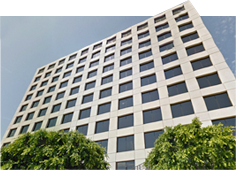NEW RULES HAVE BEEN FINALIZED FOR EB-5 INVESTMENT-BASED GREEN CARDS
EB-5 Modernization Rules Take Effect Beginning 11/21/2019
The USCIS has now finalized its new rules on changes to the EB-5 investor program, which hasn’t been updated since its inception in 1990. The changes will come into effect on November 21, 2019. While the USCIS expects these overdue changes will account for increased investment in the U.S. and ultimately bolster the EB-5 program, some real estate developers and state governments alike worry that the changes could potentially deter foreign investors.
New EB-5 Investment Minimum Requirements
Foreign investors who intend to participate in EB-5 Regional Center projects will now need to invest $900,000, up from the $500,00 that was previously required. However, this is lower than the $1.35 that USCIS had proposed. As anticipated, the amount that investors will be required to invest in direct job-creation EB-5 projects will now be $1.8 million, instead of the standard $1 million. The higher amounts, which are almost double what they used to be, will likely make it more difficult for investors to raise the funds they need to qualify for projects under the EB-5 program.
The requirement that these projects must create, or at least preserve, a minimum of 10 full-time U.S. jobs remains in effect. One benefit of the higher capital is that the funds can better cover the salaries of full-time workers engaged in EB-5 projects, as salaries have increased over the years.
Another major change in the new rules relate to the way Targeted Employment Areas (TEA) are chosen. Since it’s inception, it has been in the hands of each State to decide which neighborhoods classify as areas of high unemployment. Under the EB-5 program, investors are given a financial incentive to invest in commercial projects within these areas. However, this has led to the controversial practice of gerrymandering, where some state governments and developers have been accused of manipulating census tracts designate previously unqualified neighborhoods as areas of high unemployment, to get funding for lucrative projects. The Department of Homeland Security will now assume the role of choosing which areas qualify as TEA.
What Pre-existing EB-5 Investors Can Expect
Investors who already have an approved EB-5 petition may be able to retain their priority dates, if material changes to their investment makes it necessary for them to file a new petition. This can include if the DHS decides that a regional center project that an investor has been funding no longer qualifies as a Targeted Employment Area.
For petitions that are filed prior to November 21, 2019, the current regulatory requirements will still apply. This will undoubtedly create a rush in the filing of new petitions within the next 4 months. As such, it would be wise for potential foreign investors and stakeholders to take advantage of the lower funding requirements, and file required applications in a timely manner.






